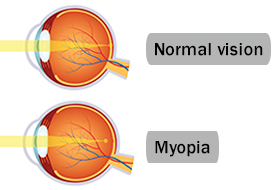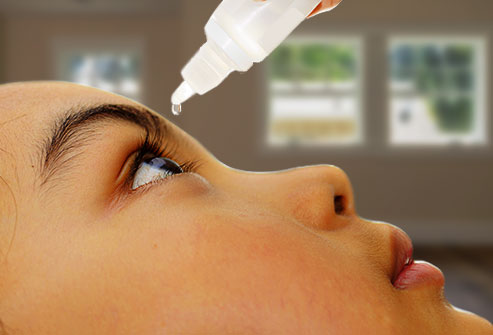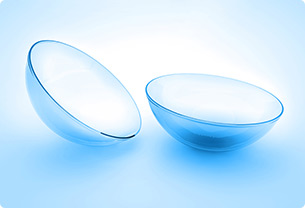Myopia Control in Kids
By Dr. Kyle Smith
Did you know we can reduce the progression of nearsightedness during childhood and adolescence by about 50%?
Myopia, also called nearsightedness, occurs when the eye is in focus for near objects, but out of focus for distant objects. This occurs if the eye is too long or the lens power of the eye is too strong.

As children grow their eyes are also growing, causing nearsighted children to become more nearsighted. This process happens because of a combination of genetics and adapting to looking at things that are near (reading, computers, phones, studying, etc).
We cannot make myopia go away, but recent studies show that we can slow the progression of myopia through childhood and adolescence. This reduces the total amount of myopia that will be present as an adult and has the potential to decrease the lifetime risk of problems like retinal detachment, glaucoma, early cataracts. It can also improve the chances of the patient being a laser refractive eye surgery candidate as an adult.

Atropine eye drops are strong dilating eye drops commonly used to dilate the pupils for certain eye problems. A very diluted concentration of atropine can be used to slow the growth stimulus for the eye and thus reduce the progression of myopia. We use a low
concentration that does not dilate the eyes and does not cause blurry vision but reduces myopia progression by about 50-60%. The medication is continued up to the late teens to early twenties.
 Another way to slow the growth of the eye is to optically blur the side vision. The central vision is still corrected normally, so the patient still maintains normal “20/20” vision. Side vision “blur” is not really noticeable but has the benefit of reducing the stimulus for the eye to grow. The myopia progression is reduced by about 40-50%, similar to atropine.
Another way to slow the growth of the eye is to optically blur the side vision. The central vision is still corrected normally, so the patient still maintains normal “20/20” vision. Side vision “blur” is not really noticeable but has the benefit of reducing the stimulus for the eye to grow. The myopia progression is reduced by about 40-50%, similar to atropine.
We can achieve this optical side vision blur in two ways. The first is with special multifocal (“bifocal”) soft contact lenses. These soft lenses are handled and feel the same as non-multifocal soft lenses, but have the added benefit of slowing the progression of myopia.
The second is with special hard contact lenses that reshape the front surface of the eye and are worn overnight while the patient is sleeping. The lenses are then removed in the morning and the patient has clear vision during the day without wearing any glasses or contact
lenses. The reshaping of the front surface of the eye is not permanent; the eyes return to the original shape once the lens use is stopped. The way the front surface of the eye is reshaped provides the same kind of side vision “blur” as the multifocal soft contact lenses.

A third method to reduce the progression of myopia might seem a little too simple. Researchers found that the more time kids spend time outdoors the lower myopia they will have. Sunlight and playing outdoors is good for many things, but it turns out to also be good for avoiding myopia.
Want to learn more about Myopia? Request an appointment for your child today.
